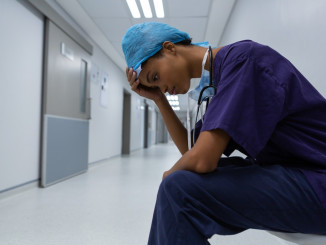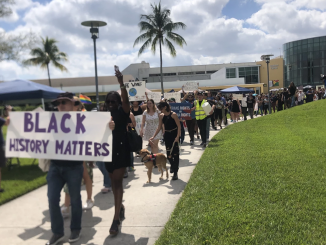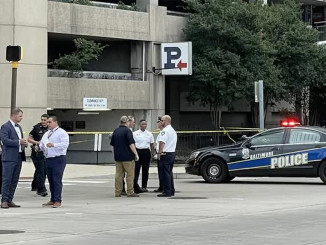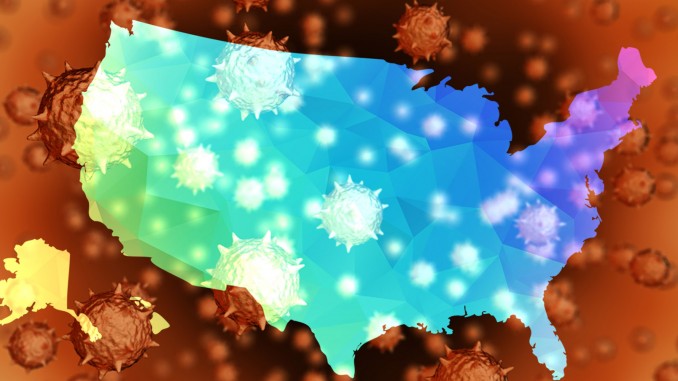
Contents
Social Pressures Under the COVID-19 Pandemic
Introduction
Globally, as of this writing in mid-December 2020, there have been more than 72 million confirmed cases of COVID-19 (number constantly rising), with over 1.6 million deaths. The U.S. accounts for about 19 percent of these deaths, while comprising 4 percent of the world population.
So far, over 15 million Americans have tested positive (though with a low rate of testing), with more than 290,000 dead. This means at least 4.5 percent of the U.S. population has been infected with the virus, with a 2.3 percent death rate. For comparison, the flu took 34,000 lives in the last flu season, with a death rate of less than 0.1 percent.
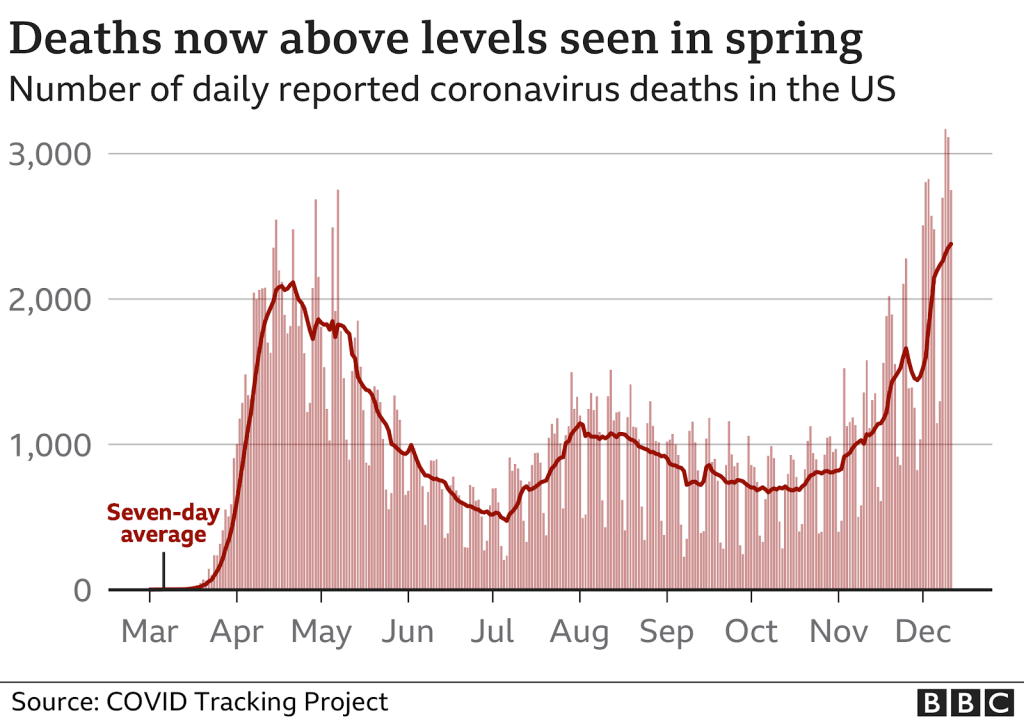
Still, by mid-December, only about 160 million tests had been administered, meaning most of the U.S. population had not even been tested. On December 9, there were over 98,000 people in ICUs, with numbers of infections surging. Many ICUs in the worst hit counties have already reached capacity, and have had to begin to either reroute ambulances to far away counties or to begin rationing care. On December 18, hospitalizations and deaths reached record levels for twelve days in a row, with no sign of decreasing, with over 3,500 deaths in one day on December 17, 2020. The absolutely failed response to containing the virus in this country – the wealthiest in the world – has made the United States the worst outbreak yet.
But this is no surprise, given how difficult access to testing can be. Unless you’re an athlete, celebrity, or politician of course. These people also receive treatments that are far superior to those available to the rest of us. Trump tested positive in early October and was given a luxury room at the Walter Reed Medical Center, with a steroid treatment reserved for severe cases (even though his was apparently mild), an antiviral drug, and an antibody cocktail. If the rest of us contract the virus, we’re told to stay home and isolate, unless we can’t breathe, in which case we go to the hospital, and have to cross our fingers.
Half of states are still experiencing an upward trend, and the U.S. is setting records. This is explained by the fact that more than half of states have reopened in recent months. If we look at the history of each state, opening typically occurs after a slight decrease in cases, only to be met with a resurgence in cases.
And while the federal government technically has the authority to impose quarantines and limit travel between states, Trump has repeatedly advocated against closures, and also refused to invoke the Defense Production Act, which would have required companies to produce needed medical supplies when there was a life-threatening shortage. As we know, this failure, in addition to the failure of any meaningful preparation for a pandemic that scientists had predicted was on the horizon, left many frontline and healthcare workers without Personal Protective Equipment (PPE). And the authority over health decisions was essentially given to governors and states, creating a patchwork of restrictions that means little when travel between states is still permitted. Additionally, many governors allocated decision-making to the county level, further leading to inconsistencies in reopening measures.
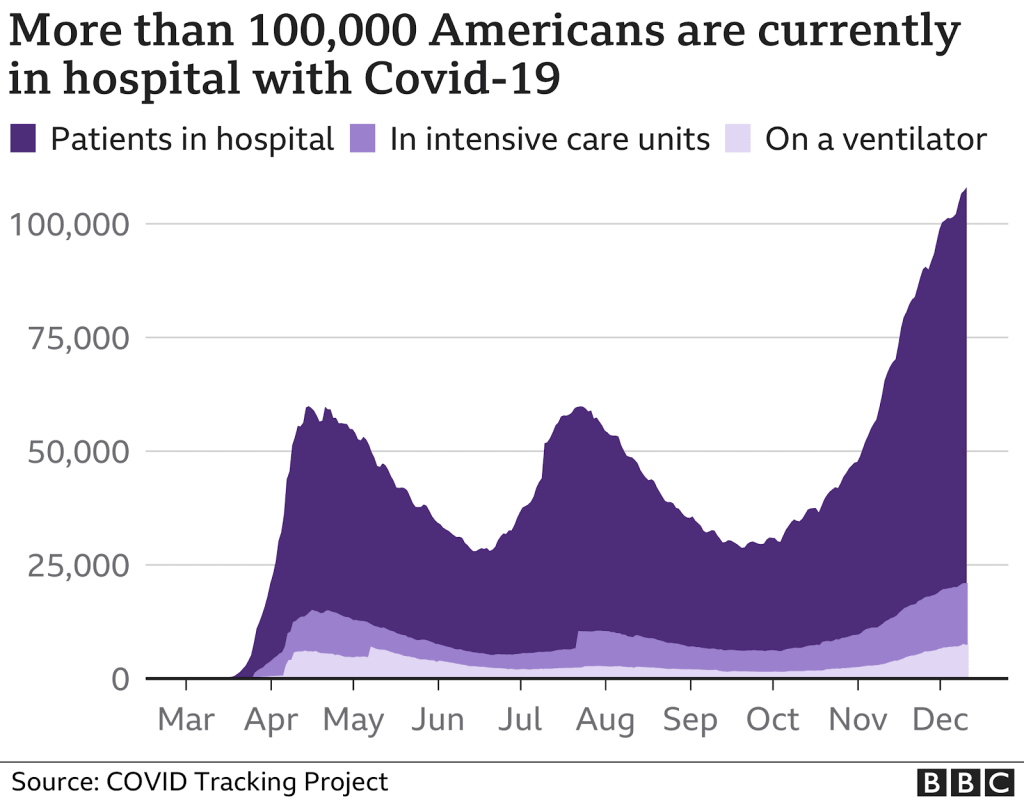
Even though COVID-19 cases peaked in early August, only seven states implemented full or partial school closures, with the remainder overwhelmingly giving school districts the autonomy to make these decisions. Some states even asked districts to plan for students to return full time to in-person study, something Trump also pushed for. So, unsurprisingly, there have been over 400,000 cases as of December, 2020 connected to K-12 school openings so far.
Many states have also opened up places of worship, restaurants, hair salons, entertainment venues, and even gyms. Major sports leagues, instead of sending players home and keeping fans away, have had live games–often with some fans in attendance–and, as a result, COVID-19 cases.
This is all no surprise when there has been no federal direction for a scientifically guided response. The White House Coronavirus Task Force has been headed by Vice President Pence, who has no qualifications for the position. Others on the task force have been criticized for downplaying the threat of the coronavirus, and only about a third of the task force even has health or science related credentials.
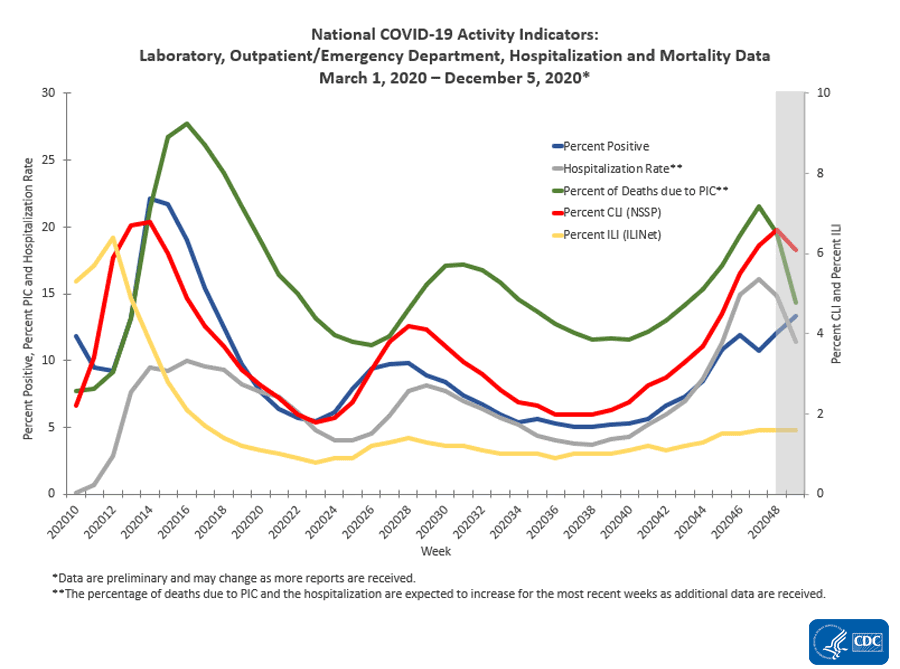
And the federal Centers for Disease Control and Prevention (CDC), headed by Robert R. Redfield, who has been accused of scientific misconduct, keeps shifting its recommendations. At the beginning of the pandemic, the CDC claimed mask wearing was unnecessary. It later confirmed the virus was airborne, then quickly rescinded this information. And it has changed its testing guidelines so many times, it’s hard to keep up with its current stance. No wonder there are so many inconsistencies in policy, when this public health authority can’t get its facts straight for long enough to justify recommendations.
In mid-July, data suddenly disappeared from the CDC, as the Trump administration shifted control of COVID-19 reporting information to the Department of Health and Human Services (HHS), an agency led by a Trump-appointed former pharmaceutical lobbyist. This unannounced shift sowed unneeded confusion, and many healthcare providers found the reporting system more complicated. It was also viewed as a politically guided decision, as the HHS is a cabinet-level executive branch department. It should be noted, however, the CDC exists under HHS – it’s just one step removed from the cabinet. Regardless, both these agencies have proven themselves unreliable for consistent and scientifically-informed information.
As for the vaccine situation? On Wednesday, December 2, the United Kingdom began administering the Pfizer vaccine, which is said to be 95 percent effective. On December 10, the FDA met with health experts to determine whether the vaccine should have emergency approval and in order to clear the way for distribution in the U.S., and received that approval. Moderna is not far behind Pfizer in producing a vaccine.
Johnson and Johnson is in late stages of clinical trials, and we will know if they’ve created a safe and effective vaccine by the end of 2020. This vaccine is a single-dose vaccine, as opposed to the Pfizer and Moderna vaccines, which both require a second dose within 28 days. These companies have been provided more than $1.5 billion under Operation Warp Speed, a program that is accelerating the vaccine timeline. HHS is currently supporting and financing a total of 14 vaccine candidates under this program, in cahoots with the FDA, and is hoping to get the field down to seven. Why are all these companies not collaborating to produce the safest and most effective vaccine? This has to do with intellectual property rights and the profit motive. So we’ll see what happens, given that the vaccine research and development process normally takes 10-15 years.
Social Pressures Under the COVID-19 Pandemic
There are societal burdens that are always present because of the exploitative system we live under, but ever since the emergence of COVID-19 in the U.S., these pressures have intensified dramatically for the Ninety-Nine Percent.
Hunger
Food insecurity has skyrocketed during this time period. [1] Just looking at data from the Census Bureau and the Department of Agriculture, we see that from 2019 to August of 2020, hunger in U.S. households almost tripled. The surveys collected showed that 10 percent of households sometimes or often didn’t have enough food to keep going week to week. And the figure doubles for Black households, while other minority groups are not far behind. [2]
That’s bad, but the figures for children are even more frightening. Somewhere between 9 and 14 percent of adults reported that their children sometimes or often didn’t eat enough during the previous week. Parents tend to go without meals to shield their kids from hunger, so when children go hungry, it is a sure sign of how dire the situation is. People are desperate for another stimulus package and a boost to their SNAP (food stamp) benefits. [3] This chronic hunger has long-lasting effects for children especially, but also for adults. When children don’t get the nutrition they need, the result is stunted growth and brain development, long-term health problems like asthma and anemia, inability to focus in school (which is even worse with education through Zoom).
It’s not as if under this pandemic there has suddenly been less food produced. In fact, during this time, there have been record levels of waste in the food industry.
Mental Health and Addiction
And how are mental health and rates of addiction faring during this global pandemic? As if the U.S. wasn’t already in a mental healthcare and opioid crisis, the past seven or eight months have only exacerbated the situation. By late June, polls taken by the CDC stated that 40 percent of adults in the U.S reported they were struggling with at least one mental health or substance abuse issue. 31 percent had anxiety or depression symptoms related to the pandemic, 13 percent started using substances or increased their use in order to cope with their stress and emotions, and over 10 percent of respondents said they seriously considered suicide in the past month. However, that last statistic was closer to 25 percent for minority groups. [4]
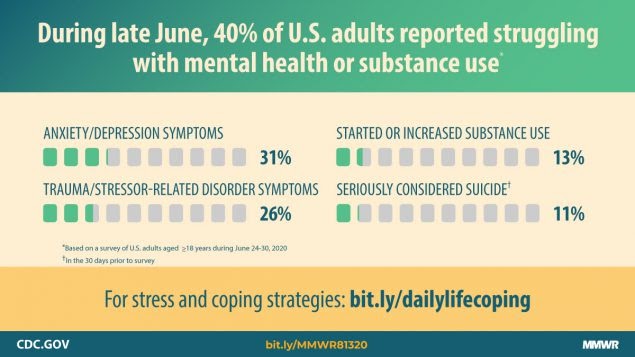
Drug and alcohol addiction have been epidemic in the U.S. for a long time. But since the pandemic, there’s been an increase in how many people have been found dead from overdoses in their homes. With social distancing measures and increased isolation, some of the social safety nets that neighbors, family, and friends would usually provide just leaves people to die alone. And since the healthcare system is already overwhelmed with COVID-19 patients, first responders may arrive too late to administer Naloxone to prevent overdoses. [5]
There’s no doubt that this pandemic and coping with the uncertainty of life under this system is taking a toll on our mental health. A poll conducted for the American Psychological Association found that 78 percent of adults say that “the coronavirus pandemic is a significant source of stress in their lives.” Also, some of the youngest people in the country, those in the Gen Z generation, are showing signs of major mental health issues, like “depression and anxiety,” and 34 percent state that their mental health is worse now than it was a year ago at this time. [6]
So much is up in the air for people in the U.S. Many have lost their jobs and may not be able to get them back, there are questions about the economy and when the next crash will hit us, and children now depend on parents to be their educators as well as their caregivers.
We also contend with the constant stream of misinformation about the virus, how it spreads, and the fears regarding vaccines being fast-tracked coming from President Trump and other governmental agencies like the CDC.
What are regular working-class people supposed to think? Since there’s really no analysis of the system that makes sense to most people, and no alternative proposed, many feel like it’s just 2020 and that it’s been a terrible year overall. Even with an analysis and critique of the system we live under, we’re also subject to the negative mental health effects and can feel incredibly overwhelmed.
Domestic Abuse
Another problem faced by many in the pandemic lockdown is domestic abuse. The United Nations states that global rates of domestic abuse have risen by 20 percent during this time, and with the added pressure of high unemployment and economic stress, many are stuck at home with their abusers in a high anxiety situation. [8] [9]. Counselors may be unavailable for help, travel restrictions undermine escape plans, and abusers may use the fear surrounding the virus to further scare victims into not seeking help. Many experts are calling the pandemic a perfect storm for domestic violence.
Although some reports in the U.S state that domestic violence rates have decreased by 50 percent this year, it’s hard to know the real number because of victims under-reporting or not reporting at all. [7] However, a statistic in the U.S. that has seen a spike is the rate of murder-suicides, where a male kills his partner and then himself. [10]
Crime
One last point to make about the mounting social pressures felt through the pandemic is the overall crime rate we’re seeing, excluding crimes of domestic abuse.
Since the stay at home orders were given in March, as calculated through 911 calls, crime has gone down in the U.S. In Chicago, there’s been a 25 percent decrease in 911 calls, and a 20 percent decrease in Washington and Baltimore. [12]. But this doesn’t necessarily point to a reduction in crime, just the number of crimes that are reported.
Homicides and shootings are up. [11] In 25 major American cities, overall crime reduced by 5.3 percent since last year, but murders increased by 16.1 percent. [13] And though it’s hard to quantify the increase in the rate in this short period of time, it’s clear that across the U.S., shootings and homicides have not gone down among both the police and civilians.
Why haven’t murders and shootings gone down during the pandemic? There are a number of factors. First, there are a lot of guns in this country. Secondly, given the social and economic pressures people are facing like unemployment, poverty, hunger, and an overall sense of helplessness in the face of this pandemic and their daily life, it’s no wonder people feel like there’s no other alternative than to resort to violence. For the police, that’s just how they normally operate, pandemic or not.
And with no alternative presented, and people left to their own devices, crime rates, domestic abuse, addiction, mental health crises, and hunger will continue to rise. This pandemic has only made the system of capitalism harder for individuals and families to live with.
Citations
[1] https://theintercept.com/2020/09/23/hunger-food-insecurity-coronavirus-children-census/
[4] https://www.cdc.gov/mmwr/volumes/69/wr/mm6932a1.htm
[6] https://www.apa.org/news/press/releases/2020/10/stress-mental-health-crisis
[7] https://coronavirus.nautil.us/domestic-violence-statistics/
[8] https://www.thehotline.org/resources/a-snapshot-of-domestic-violence-during-covid-19/
[12] https://www.ncbi.nlm.nih.gov/pmc/articles/PMC7340780/
[13] https://www.nytimes.com/2020/07/06/upshot/murders-rising-crime-coronavirus.html
The U.S. Economic Situation
Even before the pandemic hit, the world was experiencing deteriorating social and economic conditions. The mishandling of the pandemic was just the last straw, unleashing the most rapidly developing economic crisis we’ve ever experienced. Since March, tens of millions of people in the U.S. have lost their jobs across virtually all ind ustries. The service sector has been especially hard hit, with a 50% loss of its workforce so far. This trend is continuing with no end in sight—28,000 Disney employees began receiving layoff notices in October, and Disney then announced it would lay off another 4,000 by March 2021, while American Airlines and United Airlines have furloughed 32,000 workers. Many of these job losses are becoming permanent—so far nearly four million jobs have vanished for good.
Up until mid-October, 65 million claims for unemployment had been filed, with over 700,000 new claims filed every week. The official unemployment rate came to a peak of 14.7% back in April, a record not seen since the Great Depression. As of December, only about half of the people that lost their jobs have been able to regain them or find new ones, bringing the unemployment rate down to 6.7percent. But this number is expected to increase again as companies continue to lay off workers.
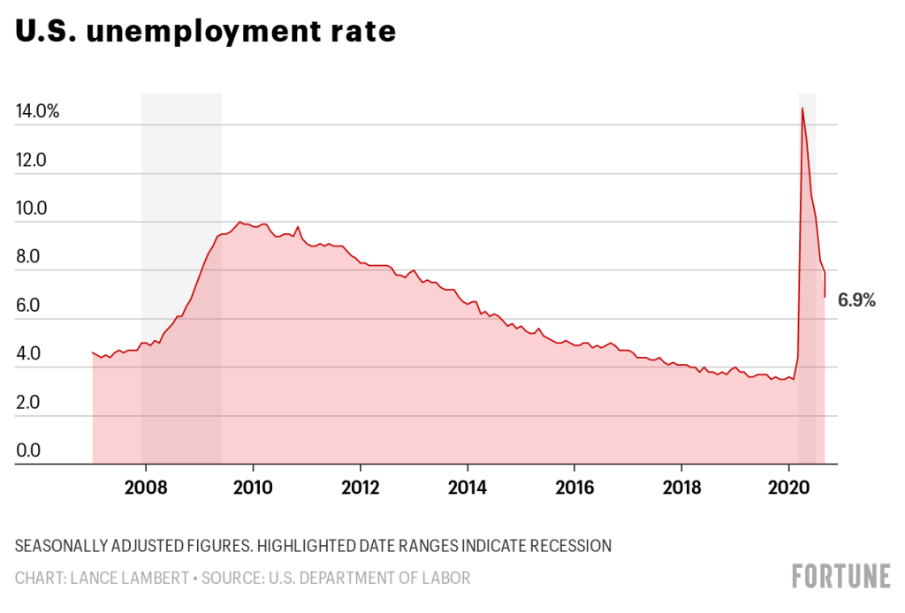
The economic impact on people, especially minority groups and those with lower incomes, has been disastrous. For those workers who have been able to stay employed, many have had to reduce their work hours, take on furloughs, or accept pay cuts. The result, overall, has been that one in four people has had trouble paying bills since the pandemic started and one-third have been forced to dip into their savings or retirement accounts to make ends meet. Others have resorted to asking friends or family for financial help. And some have been forced to join endless food lines because they can no longer afford to buy food. The weekly $600 federal unemployment checks, which were later reduced to $300 in some areas (depending on where one lived), as well as state unemployment benefits, were clearly not enough to meet people’s needs.
And if the debt crisis wasn’t bad enough before the pandemic, it has only gotten worse. With no stable source of income, many people, already struggling to pay off their credit card bills, loans, and other financial liabilities, are finding themselves falling into deeper and deeper debt. Debt collectors have begun garnishing wages, leaving those barely getting by with even less money. National medical debt rose 3 percent from the start of the pandemic until August, due to millions of people losing their health insurance after being laid off. Small businesses that took out supposedly forgivable loans during the pandemic, are now unsure if that will be the case—many have already filed for bankruptcy and more are expected to follow. Student loan forgiveness is not set to happen anytime soon. For those with federal student loans, payments have been postponed until 2021 while those with private loans are still required to pay as usual. Given the number of jobs lost, it is unclear how people will be able to pay back these loans.
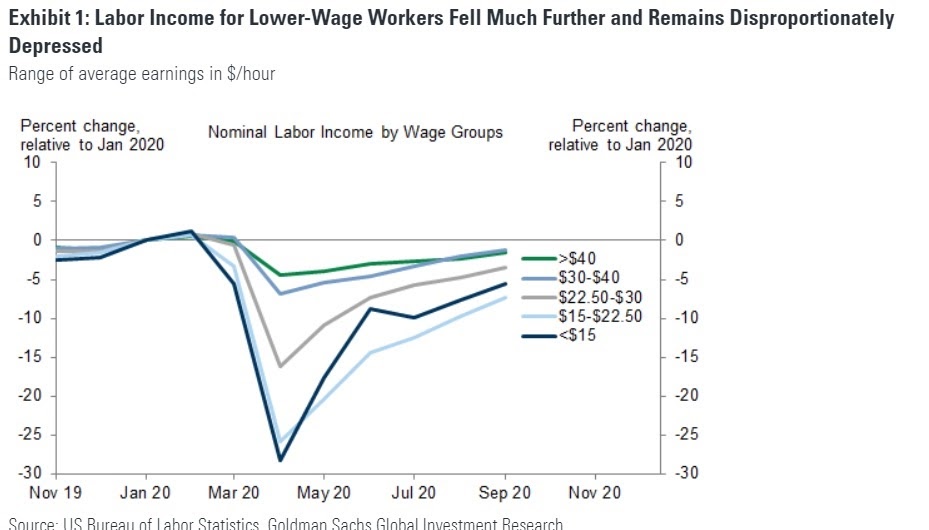
With no job or with reduced income, many people have found themselves unable to make rent or mortgage payments. A foreclosure crisis, like the one in 2008, could be headed our way, putting millions of people at risk of losing their homes. Last month, more than eight million people failed to pay their rent due to financial hardship, and an additional 14 million were uncertain if they could continue to pay in the coming months. This, coupled with expiring eviction moratoriums and unemployment benefits, means millions of working families could soon face the threat of being thrown out into the streets. And rather than banning evictions or providing adequate financial assistance to people, politicians in Washington continue to stall on the passage of much needed relief packages for unemployed and underemployed workers.
With the way the Trump administration and politicians have handled the response to the COVID-19 crisis so far, economic recovery for millions of people remains uncertain. If things continue on this same path, we will likely be heading into a deeper crisis, meaning longer food lines, more unemployment, more evictions, massive cuts to public services, and so on and so forth, in the coming period.
CA Public Budget Deficits under the COVID-19 Pandemic
As it stands, the economy of California is measured to be the fifth largest in the world, which is equivalent to the nation of France. An economy of this size comes with a large deficit already, but when you add in the global pandemic, it’s been inflated to $55 billion. This is after the $6.1 billion in cuts to social programs and state employee wages. The deficit is largely from the closure of businesses and the loss of sales tax revenue, but also from a decline in tourism, travel fees, and gas consumption. [1]
For California, the three biggest sources of revenue are income tax, and sales and corporate taxes. Because of the loss of many people’s jobs, people buying less, and corporations scaling production back and laying people off, those in the department of finance are forecasting that state tax revenue will drop by 10-25 percent. [2] Additionally, the tax revenue is predicted to decline by $9.7 billion in 2020, and $26-32.2 billion in 2021. [3]
CARES Act & Cuts
The CARES act that passed in March of this year secured $2.2 trillion in Federal funding for all U.S. states and territories, and $15.3 billion of that went to California. Although this is far from what people really need right now, without this much-needed aid, the state would be in an even more dire situation. [4]
There were hopes that a second round of government aid, around $14 billion in order to replenish California state coffers after $11 billion in cuts made on July 1, would be passed by mid-October. However, even after the presidential election in November, a second stimulus package still hasn’t been passed in the Senate. [5]
Education
This year, there have been $11 billion in cuts made to education, the courts, state workers salaries, and other public spheres. [7] Some of this funding could have been restored had the Federal government passed another aid bill. But they haven’t, and California, as well as all other states, are left to make due with even more meager education budgets.
In order to maintain education spending at the same levels as last year, the state essentially took out a payday loan and borrowed $12.5 billion from next year’s budget, which will lead to a $20 billion shortfall for next year. [8] This means if we think the cuts are bad now, just wait and see what next year will look like.
One question left hanging is whether or not districts will be able to borrow against that money and how long their savings will last. [10] Nobody knows, and this makes it incredibly difficult for schools to plan their budgets.
All across the country, colleges and universities are also making dramatic cuts to their budgets. Although CSU systems are tapping into emergency reserves as a “bridge” to minimize layoffs and other permanent cuts, hiring freezes and forced early retirements are becoming the norm due to an estimated $120 billion in losses to colleges. [11]
Another chunk of California’s education budget that’s at stake is nearly $1 billion for the UC and CSUs that the state budget made dependent on federal aid. Each university system is now operating with about $300 million less from the state than it did last year.
Many campuses have already adopted a reduced budget, rather than waiting to see what Congress does. San Francisco State University, which lost $22 million from the state, said that they would lay off 131 staffers by early November. And if Congress doesn’t pass another stimulus, UC Berkeley will be set back another $40 to $50 million. Without the funding necessary to close the budget gap, the education system in California will continue to dwindle. Congress has proven they won’t save us or the education system.
State Workers, the Courts and Other Cuts
Other budget cuts impact state and county workers. State workers are having to endure a 10 percent pay cut, which amounts to $3 billion. And in Alameda County, there’s a hiring freeze in the court system. [12] Close to 120 positions out of about 650 are now vacant, and half of the remaining staff is furloughed every other Friday. Without additional aid, these budget cuts could mean additional furloughs, reduced hours, or even layoffs, which would result in slower filing times for paperwork and delayed court hearings.
This year, the state will also sustain $250 million in reductions to affordable housing grants, and $250 million in funding decreases to county health and social services programs. This is just one more blow to working people in a state that already has some of the highest housing costs and most homelessness.
Transit
In terms of transit systems around the Bay Area, it’s not looking any better. MUNI, the public transit system in San Francisco, is currently facing an estimated loss of up to $555 million in capital revenues over the next five years. They need $3.2 billion, or roughly $632 million annually over the next 20 years, to replace aging infrastructure. The director of MUNI said to the board of directors “We’re going to need all of you to help us make some very painful decisions over the next 22 months.” Essentially what the transit system will be doing is living off of credit until “falling off a financial cliff in 2022.” Forty lines have already been suspended since the pandemic started, with no plans to bring them back unless a new revenue stream comes in. [13] Everything will be cut to the bare bone, leaving workers to figure out how to make ends meet.
At AC Transit, the public transit system connecting Oakland, Western Alameda, and Contra Costa County, there is a crisis unfolding.
Management is proposing service cuts of up to 30 percent due to the loss of revenue from the pandemic. Along with the cuts underway, there are hiring freezes and potential layoffs. These measures would directly affect the mostly low-income and diverse community that depends on the transit system, as well as the majority Black workforce AC employs.
In an effort to increase safety for riders and drivers, rear doors have been used for boarding the buses and fares haven’t been collected. A recent press release claims that this is causing a loss in revenue of $1 million each week. However, this is just the tip of the iceberg. At the very least, AC Transit needs an enormous funding increase to even begin reversing the years of funding cuts.
One of the public transit systems that spans across most parts of the Bay Area, BART, is seeing a significant decrease in riders. Ridership is hovering around 12 percent of what it used to be before the pandemic hit [14] This poses a major problem for the Bay Area economy, the many BART workers that depend on this relatively stable job, and riders who either don’t have any other transportation to get to work and school, or prefer the public transportation that BART provides.
Currently BART is on track to accumulate a $33 million budget deficit by next summer if ridership doesn’t increase or if no federal funding aid comes in [15] This has driven BART management to implement some heavy cost-saving measures, like early retirement incentives, a hiring freeze, and even layoffs. Even with all of these cuts, it still may not be enough to break even. If a federal aid package of $33 million doesn’t come through soon, suspending weekend service and bankruptcy could be the next steps.
The news of the Bay Area economy is overshadowed by news of the national economy. If trends continue, the debt that states are accumulating will continue to grow. This is along with unemployment numbers increasing and decreases in sales tax revenue from people reducing their consumption.
The economy seems to be hanging on by just a thread, and public institutions along with everyday people are holding their breath for another round of stimulus funding. Another fear hanging over many people’s heads is the next crash in the market. Whether it be the stock market, the real estate and housing, or student debt, where will the relief come from?
Citations
[3] https://www.cbpp.org/research/state-budget-and-tax/states-grappling-with-hit-to-tax-collections
[7] https://www.kpbs.org/news/2020/jun/30/californias-budget-has-billions-cuts-close-deficit/
[9] https://www.cta.org/our-advocacy/state-budget
[11] https://www.nytimes.com/2020/10/26/us/colleges-budget-cuts-finance.html
[12] https://sacramento.cbslocal.com/2020/05/14/california-state-workers-10-percent-pay-cut-budget
[15] https://sanfrancisco.cbslocal.com/2020/10/22/bart-budget-deficit-33-million-summer-21/
[16] https://www.cbsnews.com/news/coronavirus-pandemic-darkest-days-biden-covid-advisory-board-osterholm/


